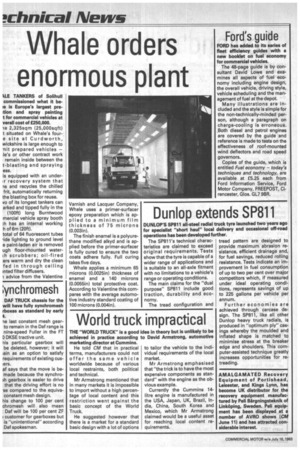Whale orders enormous plant
Page 14

If you've noticed an error in this article please click here to report it so we can fix it.
%LE TANKERS of Solihull commissioned what it beis is Europe's largest prelion and spray painting t for commercial vehicles at verall cost of £250,000.
ie 2,325sqm (25,000sqft) t situated on Whale's foure site at Curdwo.rth, wickshire is large enough to -nit prepared vehicles — le's or other contract work remain inside between the t-blasting and spraying ess.
is equipped with an under recovery system that is and recycles the chilled frit, automatically returning the blasting box for reuse.
vo of its longest tankers can arked and tipped fully in the (100ft) long Burntwood mercial vehicle spray booth :h has an internal working h of 6m (20ft).
total of 64 fluorescent tubes 'ide lighting to ground level e paint-laden air is removed ugh floor-mounted water scrubbers; oil-fired ers warm and dry the clean fed in through ceiling inted filter diffusers.
.1 advice from the Valentine Varnish and Lacquer Company, Whale uses a primer-surfacer epoxy preparation which is applied to a minimum film thickness of 75 microns (0.003in).
The finish enamel is a polyurethane modified alkyd and is applied before the primer-surfacer is fully cured to ensure the two coats adhere fully. Full curing takes five days.
Whale applies a minimum 65 microns (0.0025in) thickness of enamel and a 140 microns (0.0055in) total protective coat. According to Valentine this compares with the average automotive industry standard coating of 100 microns (0.004in).
























































































